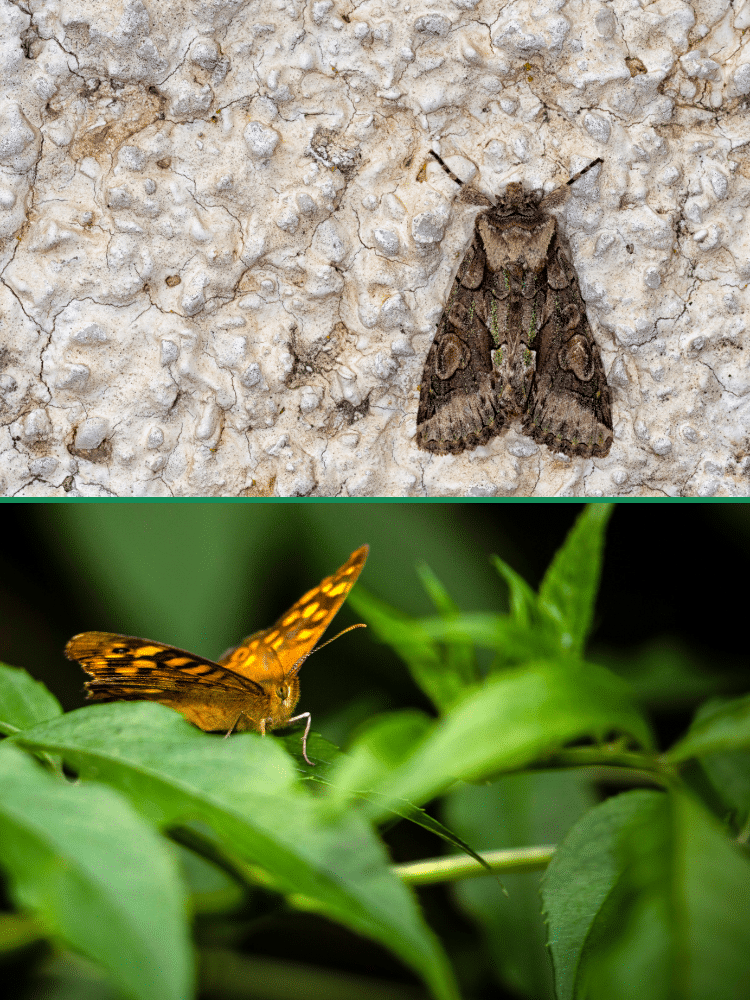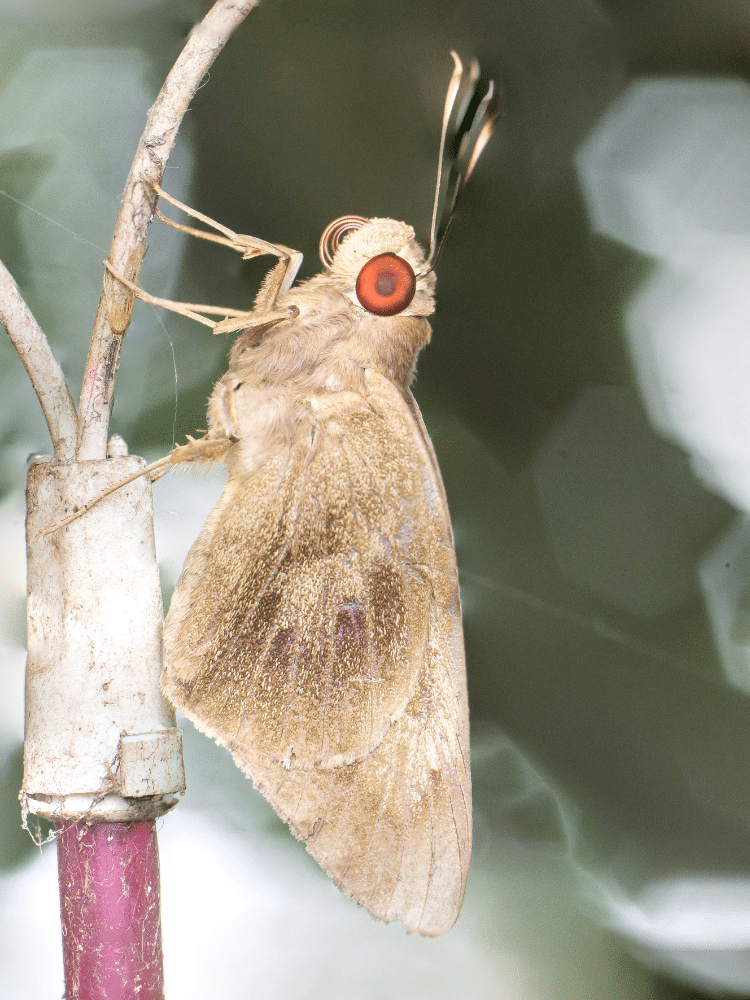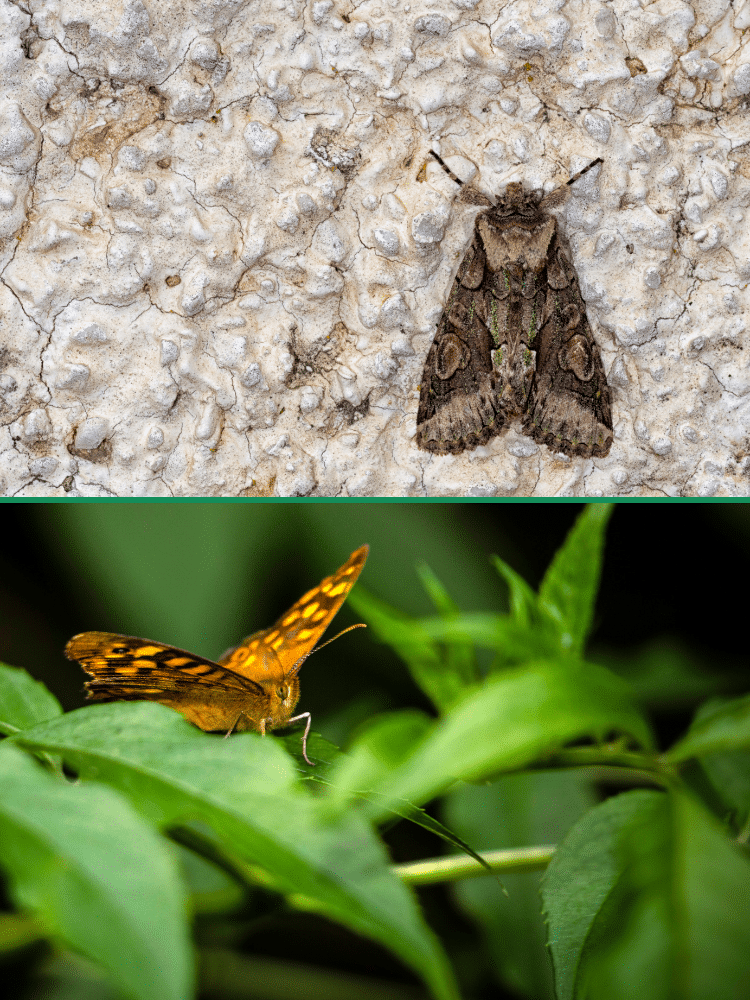When we think of butterflies, we often imagine vibrant wings fluttering in sunlit meadows, symbols of beauty and transformation. Moths, on the other hand, might conjure images of nighttime escapades. But beyond this, a question lingers: Are moths and butterflies related?

Moths and butterflies are closely related, both belonging to the Lepidoptera order. They share a common evolutionary ancestry and many similar traits, despite their distinct physical and behavioral differences.
Lepidoptera Family
The Lepidoptera order is at the heart of understanding the relationship between moths and butterflies.
This vast order encompasses both these winged wonders, making them close relatives in the grand tapestry of the animal kingdom.
The name “Lepidoptera” itself is derived from Greek words meaning “scale” and “wing,” aptly describing the unique, scaled wings that both moths and butterflies possess.
While over 160,000 species of moths are documented, butterflies number around 17,500.
Despite this disparity in numbers, they share many common traits, from their coiled proboscis to their metamorphic life cycle, transitioning from egg to caterpillar, then chrysalis or cocoon, and finally emerging as the winged adults we recognize.
But this doesn’t necessarily mean that moths and butterflies are related. You can see a full butterfly vs moth comparison here.
Evolution
Let’s start at the beginning and see how moths and butterflies came to be. While both belong to the Lepidoptera order, their evolutionary paths diverged millions of years ago.
Moths made their first appearance on Earth much earlier than butterflies. Fossil records suggest that moths have been around for at least 190 million years during the Jurassic period!
These ancient moths, with their nocturnal habits, evolved in a world dominated by dinosaurs.
On the other hand, butterflies are relatively younger, with the oldest butterfly fossils dating back to around 56 million years ago. Their evolution is closely tied to the proliferation of flowering plants.
As these plants diversified, so did the butterflies, evolving vibrant colors and patterns to adapt to their changing environments.
Interestingly, some scientists believe that certain moths, over time, transitioned to a diurnal lifestyle, giving rise to what we now recognize as butterflies. The availability of floral nectar might have driven this shift during the day or the need to escape nocturnal predators.
Butterflies Evolved From Moths
That’s right! Moths were flying around for over 100 million years before some of them evolved into butterflies with the ability to fly around during the day.
Physical Differences
While moths and butterflies share a common lineage, they’ve developed distinct physical characteristics that set them apart over millions of years of evolution.
Wings
Typically, butterflies flaunt vibrant and colorful wings with intricate patterns that serve various purposes, from attracting mates to warding off predators. Most butterflies hold their wings vertically together above their bodies when at rest.
Moths, in contrast, possess a broader range of wing colors, from drab browns and grays to iridescent hues. Their wings are often larger in proportion to their bodies and are held flat against a surface or tent-like over their bodies when resting.

Bodies
Sleek and slender, butterfly bodies are usually smoother and more streamlined, reflecting their primarily diurnal nature and the need for agility during daylight hours.
Moth bodies tend to be more robust and fuzzy, with a dense covering of hair-like scales. This “fuzziness” provides insulation, keeping them warm during nocturnal activities.

Antennae
Butterfly antennae are slender with a clubbed or bulbous end, giving them a somewhat “knobbed” appearance.
Moth antennae vary widely but are often feathery or saw-edged, especially in males. This increased surface area helps them detect pheromones, locating potential mates.
Behavioral Differences
While their physical attributes provide clues to their identities, the behaviors of moths and butterflies further distinguish these two groups.
Butterflies
Primarily diurnal, butterflies are creatures of the day.
They rely on the sun’s warmth to heat their wings for flight. Their vibrant colors aren’t just for show; they play a role in mate attraction, territorial disputes, and even as a warning to predators about potential toxicity.
Moths
Moths, on the other hand, are primarily nocturnal, with a few exceptions. They’ve evolved incredible sensory adaptations to navigate the night.
For instance, some moths can detect the ultrasonic calls of bats and take evasive action. Their often muted colors provide camouflage, helping them blend into their nighttime surroundings.
Yet, the lines blur in nature’s vast spectrum. Some moths, like the Hummingbird Hawk-moth, are active during the day, while a few butterfly species prefer the twilight hours.
Similarities
While moths and butterflies have distinct differences, they also share many similarities, owing to their shared ancestry within the Lepidoptera order. Here are some of the key similarities between these two groups:
- Metamorphic Life Cycle: Both moths and butterflies undergo a complete metamorphosis. This means they transition through four main stages: egg, larva (caterpillar), pupa (chrysalis or cocoon), and adult.
- Dietary Habits: Both primarily feed on plant matter in their caterpillar stage. As adults, they often sip nectar from flowers using their specialized mouthpart, the proboscis.
- Scaled Wings: The wings of both moths and butterflies are covered in tiny scales. These scales give them their vibrant colors and patterns and are also the reason behind the name “Lepidoptera,” which means “scale-winged.”

- Antennae: Both possess antennae, which they use for sensing their environment. While their shapes might differ, the primary function remains to detect scents and navigate their surroundings.
- Role in Ecosystems: Moths and butterflies play crucial roles in ecosystems as pollinators. They help reproduce many plants by transferring pollen as they feed on nectar.
- Threats and Challenges: Both groups face similar threats, including habitat loss, climate change, and pesticide exposure. Their survival is intertwined with the health of their habitats.
- Sensory Abilities: Moths and butterflies have compound eyes that detect light and movement. They also possess sensory organs, like tympanal organs in moths, to detect sounds and vibrations.
Understanding these similarities provides a deeper appreciation for the intricate balance of nature and the shared evolutionary paths that have shaped the world of moths and butterflies.







